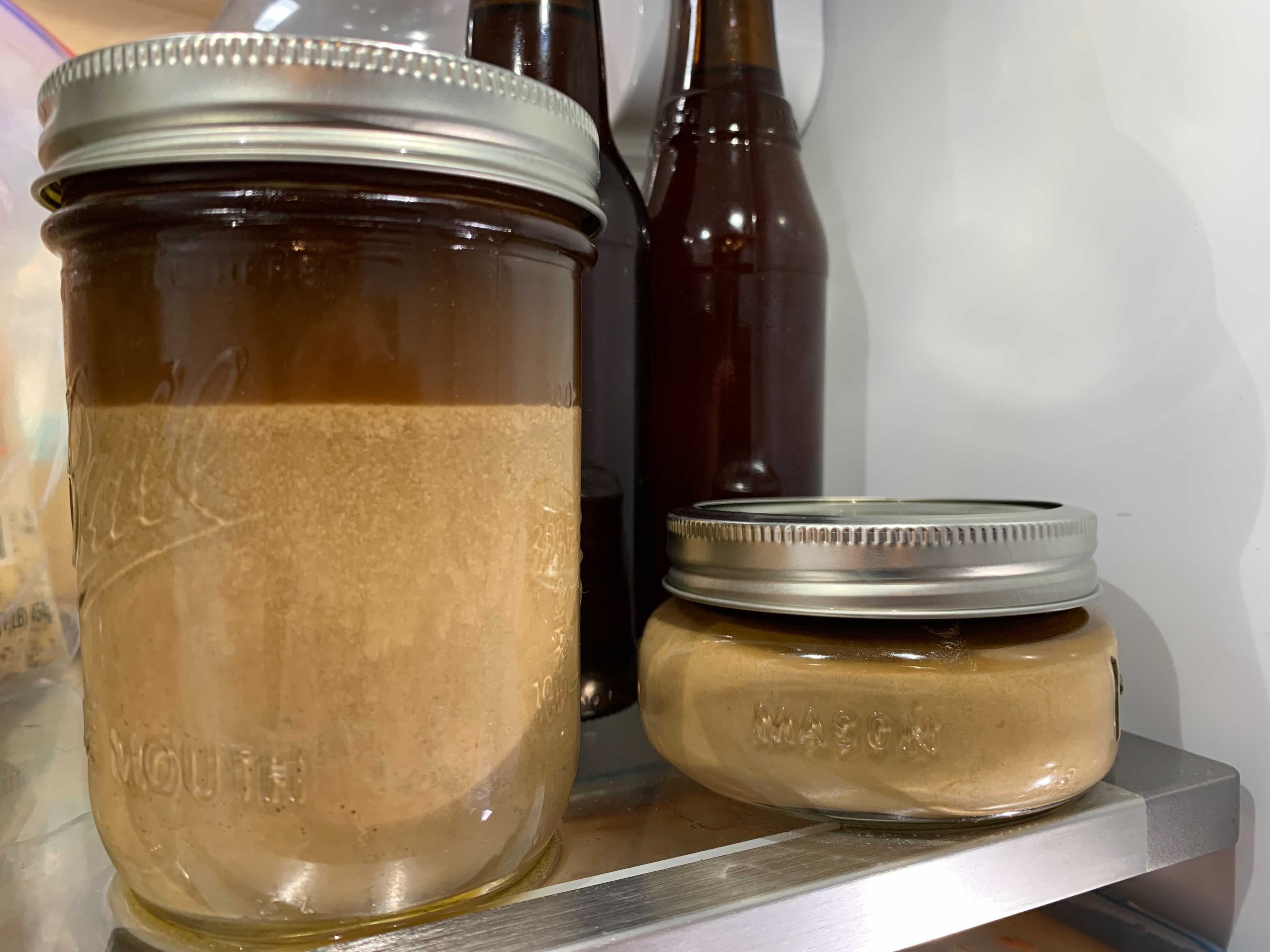Joe.Conley
Member
- Joined
- Aug 13, 2020
- Messages
- 21
- Reaction score
- 3
It was my first time re-using yeast, this weekend. (lined up 3 or 4 recipes using the same yeast so I thought I'd give it a try). I had no way to count the yeast so I used the most conservative number on this thread in the forum, and used all ~6 oz (assuming 30 billion cells per fl oz, so 180 billion cells to hopefully grow to 350 or 400 needed for the recipe) of slurry in this jar, I think it was way too much.

(right jar was harvested first, but I assume it was more dead yeast, so I used the second one. Maybe next time I should take 3 small jars and just use the 2nd jar to get the healthiest yeast that aren't dead or too flocculent)
It was two weeks between harvesting and pitching, and it was my first time re-pitching so I did a starter just to make sure it was viable. I tried to get away with 1.8L starter in the 2.5L flask but I think it was way too much yeast because after little foam on the stir plate for 18hrs it foamed out the top, and never stopped bubbling up CO2 after 18 hours on the counter with no stirring, and 8+ hours in the fridge (same procedure I've been using with packet yeast, with times a little shorter or longer based on growth factor). I had to decant good yeast that never settled, but there looked to be more than enough settled on the bottom of the starter, though weirdly there were 3 or 4 visible layers of stratification on the bottom, which was strange since the source jar looked quite uniform. The lag time was longer this time, about a whole day versus 10 or 12 hours when I used the same Wyeast 1056 from the package, and the starter as well as the fermentor smell(ed) more fruity (in addition to yeasty) that I would expect, maybe touching on a sour note. Hope there's not an infection
 . The fermentation is going strong now at least.
. The fermentation is going strong now at least.
Anyone have similar experiences, or tips on how to improve the process? Thinking about getting a microscope, I hear there's a software that can count cells for you if you get a digital image.

(right jar was harvested first, but I assume it was more dead yeast, so I used the second one. Maybe next time I should take 3 small jars and just use the 2nd jar to get the healthiest yeast that aren't dead or too flocculent)
It was two weeks between harvesting and pitching, and it was my first time re-pitching so I did a starter just to make sure it was viable. I tried to get away with 1.8L starter in the 2.5L flask but I think it was way too much yeast because after little foam on the stir plate for 18hrs it foamed out the top, and never stopped bubbling up CO2 after 18 hours on the counter with no stirring, and 8+ hours in the fridge (same procedure I've been using with packet yeast, with times a little shorter or longer based on growth factor). I had to decant good yeast that never settled, but there looked to be more than enough settled on the bottom of the starter, though weirdly there were 3 or 4 visible layers of stratification on the bottom, which was strange since the source jar looked quite uniform. The lag time was longer this time, about a whole day versus 10 or 12 hours when I used the same Wyeast 1056 from the package, and the starter as well as the fermentor smell(ed) more fruity (in addition to yeasty) that I would expect, maybe touching on a sour note. Hope there's not an infection

Anyone have similar experiences, or tips on how to improve the process? Thinking about getting a microscope, I hear there's a software that can count cells for you if you get a digital image.


